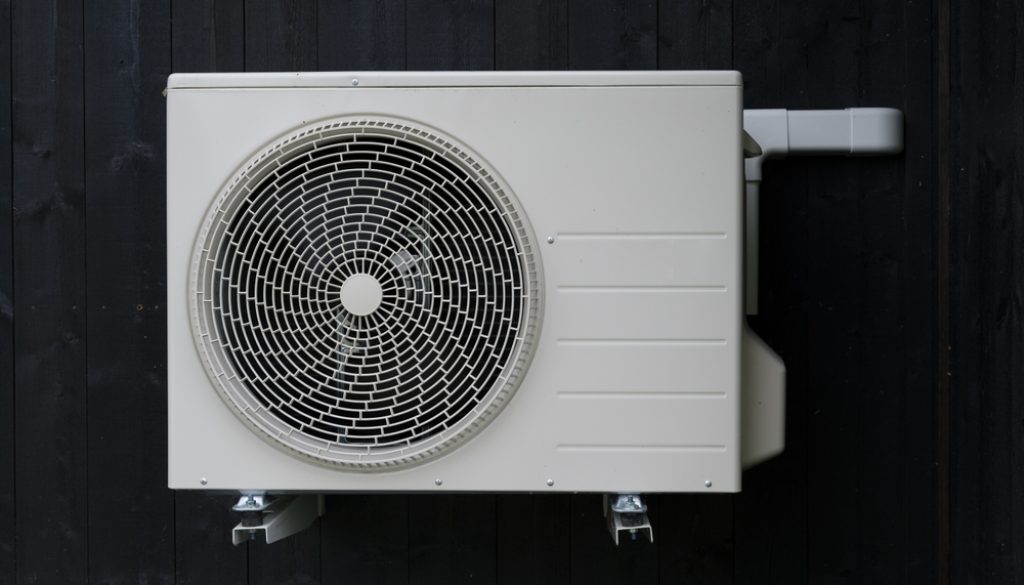Self-regenerative heat pumps: the future of electrocaloric cooling
The self-regenerative heat pump (SRHP) has emerged in response to the climate crisis and forms a key part of the current conceptual and functional revolution in the cooling sector. Global warming and the urgent need to switch to sustainable energy sources mean that innovative air conditioning and refrigeration solutions have become essential.
Conventional steam compression systems, which are still widely used, are characterised by high energy consumption, the use of climate-altering refrigerant fluids and cumbersome infrastructures. Technological research has revealed that the use of electrocaloric materials and solid state archectures is a promising strategy in order to tackle these issues.
Physical basis of electrocaloric cooling and te structure of self-regenerative heat pumps
The electrocaloric phenomenon is a thermal effect caused by variations in the internal dipolar order of a dielectric material when subjected to an electric field. In thermodynamic terms, the application of an electric field to an electrocaloric material increases its electrical entropy but reduces its thermal one, thereby generating heat transfer.
Given that this process is irreversible, once the electric field is removed, the material cools down. Unlike in thermoelectric systems, the electrocaloric effect allows for large temperature variations in dielectric materials, with potential for greater theoretical efficiency.
Thanks to the physical principles described above, a self-regenerative heat pump developed by researchers at the Department of Materials Science and Engineering at UCLA (University of California, Los Angeles) is potentially able to use a cascade of electrocaloric polymer film, which is stacked and functionally interconnected. This eliminates the need for auxiliary components for heat transport or exchange.
A closer look reveals that each module of the heat pump is made up of six stacked functional units. Each unit includes:
- active polymer film with electrocaloric properties;
- carbon nanotube electrodes for uniform electric field distribution;
- separator layers in polyamide for heat insulation and mechanical stability.
This configuration allows high functional density, as the system is compressed into minimal volume, without compromising its cooling ability.
The principle behind the functioning of an SRHP is based on the a cyclical alternation of compression and expansion of the polymer films. When an electric field of 80 mV/m is applied, the polymers are compressed, transferring heat to the adjacent stacks. When the electrical field is removed, the material expands and cools, removing heat from the surrounding area. The thermodynamic cycle is completed in around 30 seconds and can be repeated with high frequency.
The cascade design ensures the correct thermal flow direction, with heat gradually dissipating towards the exterior and a concentrated refrigerant effect in that particular area. A reduction in room temperature of up to 14° Kelvin, (measured via infrared thermal imaging), has been observed: a sign of efficient thermal flow transmission.
Performance, technological advantages and potential applications
A self-regenerative heat pump can reach a specific cooling power of 1.52 W/g, which is considerably better than the performance of conventional steam compression refrigerators in terms of weight-power ratio. This result is significant, especially for portable or miniaturised applications, where every gram and miliwatt count.
Its minimal energy consumption is another benefit; the absence of compressors, pumps and transport fluids reduces parasitic consumption, improving its coefficient of performance (COP) and environmental sustainability.
The absence of climate-damaging refrigerant fluids, such as HFCs or HCFCs and the lack of gas expansion or compression cycles means that there are no climate altering emissions during operation and maintenance and disposal costs are greatly reduced.
As mentioned above, a complete thermal cycle takes around 30 seconds: a much smaller response time compared to traditional systems. This characteristic makes the SRHP ideal for applications requiring rapid, precise temperature regulation, such as in advanced electronics or wearable systems.
The features listed above make the self-generative heat pump an appropriate alternative for use in a wide range of application scenarios, including:
- wearable devices and personalised medicine: localised, silent cooling is essential for sensors, smart clothing and devices for body temperature regulation. An SRHP can be integrated into technical fabrics or electronic patches for monitoring and regulating body temperature;
- high density electronics: in microelectronics and the semiconductor sector, thermal control is essential to ensure reliability and durability. SRHPs could be used to dissipate heat in microprocessors, GPUs, telecommunication devices and solid state lasers;
- portable refrigeration systems: thanks to their compact design and the absence of moving parts, SRHPs are suitable for use in portable refrigerators, smart thermal containers and on-site cooling devices, without the need for high-capacity batteries or compressors;
- electric vehicles and aerospace: thermal management in electric vehicles, drones and satellites requires a light but strong, low consumption solution. SRHPs can meet these needs efficiently wth their flexible, scalable configuration.
Technological issues and developmental outlook
Although results obtained so far are promising, this technology still has certain limitations, such as:
- industrial scalability: the serial production of high performance polymer films and nano-structured electrodes requires optimised processes and a reduction in costs;
- cyclical durability: after repeated electric field cycles and mechanical stress, long term reliability must be validated for real world applications;
- electronic control management: to achieve precise, stable thermal regulation, integrated real time systems are required, which need additional, if lightweight, components.
Nevertheless, it is interesting to compare the self-generative heat pump with other solid cooling technologies, such as the magnetocaloric or thermo-electric effect. It is apparent that, unlike magnetocaloric, SRHP does not require strong magnetic fields or rare materials.
If compared to Peltier modules though, the SRHP guarantees wider variations in temperature with less heat loss and it can operate on flexible, three dimensional surfaces. These elements make the SRHP a more versatile alternative, with greater applicational potential for many practical uses.
Translated by Joanne Beckwith







